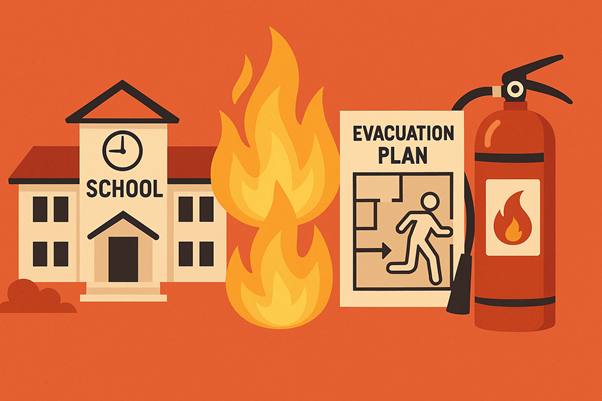
Schools are meant to be safe havens for learning, growth, and community building. Yet, like all public buildings, they are susceptible to emergencies such as fires. The presence of hundreds or even thousands of students and staff within school walls makes fire safety not only a legal requirement but also a moral imperative. Effective fire safety protocols can mean the difference between a controlled evacuation and a tragic incident. In this article, we’ll explore the essential components of school fire safety, from prevention and preparedness to response and recovery.
The Importance of Fire Safety in Schools
Fires in schools, though relatively rare compared to other types of emergencies, pose significant risks due to the sheer number of occupants and the potential for panic. Young children, in particular, may not know how to respond effectively in emergencies, making proactive safety planning crucial. According to the National Fire Protection Association (NFPA), U.S. fire departments respond to nearly 5,000 fires annually in educational properties, with many of them occurring during regular school hours.
The goal of fire safety protocols is not only to prevent fires from occurring but also to ensure that if one does happen, everyone in the building knows how to react quickly and safely. Schools that take fire preparedness seriously reduce the risk of injury, property loss, and emotional trauma.
Key Elements of a Comprehensive School Fire Safety Plan
- Fire Prevention Strategies
Prevention is the first and most crucial line of defense. Schools should take measures to eliminate potential fire hazards. Key fire prevention steps include:- Regular maintenance of electrical systems: Faulty wiring is a common cause of school fires. Schools must ensure all electrical systems are routinely inspected and updated.
- Proper storage of flammable materials: Science labs, art rooms, and maintenance closets often contain flammable substances. These must be stored in compliance with safety regulations.
- No smoking policies: Strict enforcement of no-smoking rules within and near school buildings reduces the risk of accidental fires.
- Kitchen safety protocols: Cafeterias and food preparation areas should be monitored for potential fire hazards, and staff should be trained in fire suppression methods.
- Fire Detection and Suppression Systems
Early detection saves lives. Every school should be equipped with:- Smoke detectors and fire alarms: These should be tested regularly and be loud enough to be heard throughout the building.
- Sprinkler systems: Automatic fire sprinklers can extinguish or contain fires before they spread.
- Fire extinguishers: Strategically placed extinguishers should be accessible, with trained personnel ready to use them.
- Fire doors: Fire-resistant doors can slow the spread of fire and smoke, giving occupants more time to evacuate safely.
- Clear Evacuation Plans
Evacuation planning is at the heart of fire safety. Schools should have a well-defined evacuation protocol that includes:- Visible evacuation maps: Maps should be posted in all rooms, indicating primary and secondary exits.
- Designated meeting points: Students and staff should know where to gather outside the building to ensure accountability.
- Evacuation drills: Conducted at least once per term, these drills teach everyone how to exit the building calmly and efficiently.
- Special provisions for students with disabilities: Evacuation plans must account for students who require assistance or mobility devices.
- Training and Education
Training ensures that all individuals—students, teachers, and support staff—know their roles in an emergency.- Fire safety education for students: Age-appropriate lessons can empower students to act responsibly during emergencies.
- Staff training: Teachers and administrators should receive training on evacuation procedures, how to use extinguishers, and how to guide students safely out of the building.
- Coordination with emergency services: Schools should regularly liaise with local fire departments to review and improve their protocols.
Fire Drills: Turning Protocol into Practice
Drills are a cornerstone of school fire safety. They simulate real-life scenarios, helping identify weaknesses in the evacuation plan. A successful drill ensures that:
- All alarms work properly and are easily heard.
- Students and staff can evacuate within a few minutes.
- Attendance is taken at the meeting point to verify everyone’s safety.
- Feedback is collected afterward to refine the process.
Post-drill evaluations can reveal valuable insights, such as bottlenecks in hallways or confusion over exits, and provide a basis for improving safety procedures.
Post-Fire Recovery and Support
While prevention and preparedness are essential, schools must also have protocols in place for recovery after a fire incident.
- Counseling services: Fires, even small ones, can be traumatic. Students and staff may benefit from counseling to address anxiety or PTSD.
- Communication with families: Clear, timely communication with parents and guardians is vital after a fire emergency.
- Damage assessment and repairs: A thorough assessment of the physical damage must be conducted before the school reopens. Temporary relocation plans may also be needed.
- Review and revise protocols: Every incident provides learning opportunities. Schools should revise their fire safety plans based on what worked and what didn’t.
Role of Technology in Modern Fire Safety
Advancements in technology are improving how schools manage fire safety. Some innovations include:
- Smart fire detection systems that can pinpoint the exact location of a fire.
- Mobile alert systems that notify staff and emergency services instantly.
- Emergency communication apps to relay real-time information to parents, staff, and first responders.
As schools embrace smart technology, these tools can help bridge the gap between emergency and response, saving precious seconds when it matters most.
Conclusion
Protecting students and staff from the dangers of fire is a responsibility that schools must take seriously. Fire safety protocols are not just checkboxes for compliance—they are active systems designed to preserve life and property. Through regular maintenance, clear evacuation procedures, frequent drills, and ongoing education, schools can build a culture of safety and readiness.
Administrators, teachers, parents, and students all play a role in ensuring fire safety. When everyone is informed, prepared, and proactive, the entire school community becomes more resilient against the threat of fire.
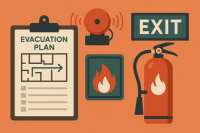
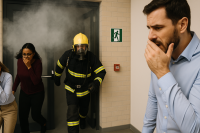
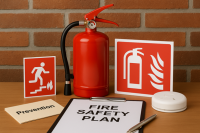
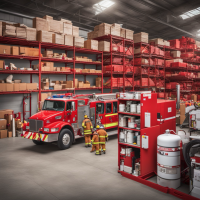
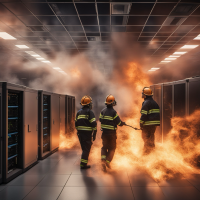
Leave A Comment